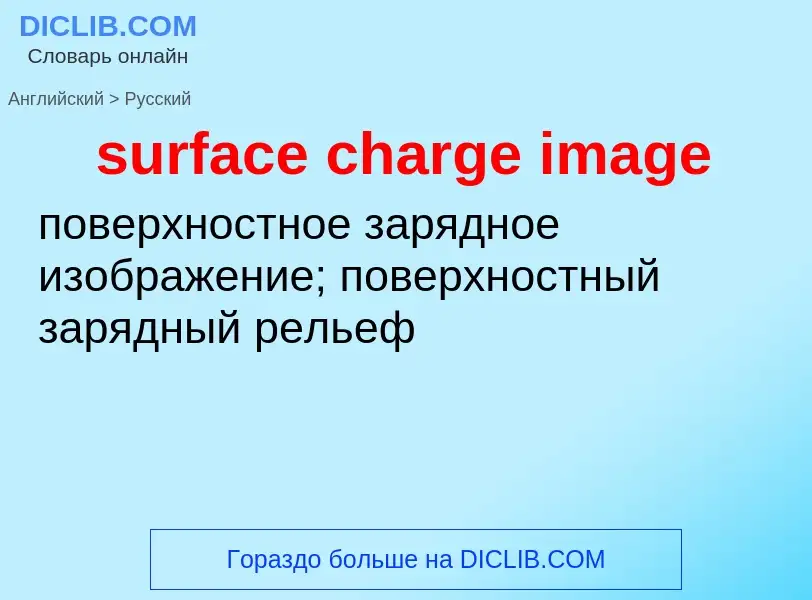Translation and analysis of words by ChatGPT artificial intelligence
On this page you can get a detailed analysis of a word or phrase, produced by the best artificial intelligence technology to date:
- how the word is used
- frequency of use
- it is used more often in oral or written speech
- word translation options
- usage examples (several phrases with translation)
- etymology
surface charge image - translation to russian
[ʃɑ:ʒei|dæ'feə]
дипломатия
поверенный в делах
существительное
дипломатия
charge's d'affaires поверенный в делах
общая лексика
электростатический заряд
Wikipedia
A surface charge is an electric charge present on a two-dimensional surface. These electric charges are constrained on this 2-D surface, and surface charge density, measured in coulombs per square meter (C•m−2), is used to describe the charge distribution on the surface. The electric potential is continuous across a surface charge and the electric field is discontinuous, but not infinite; this is unless the surface charge consists of a dipole layer. In comparison, the potential and electric field both diverge at any point charge or linear charge.
In physics, at equilibrium, an ideal conductor has no charge on its interior; instead, the entirety of the charge of the conductor resides on the surface. However, this only applies to the ideal case of infinite electrical conductivity; the majority of the charge of an actual conductor resides within the skin depth of the conductor's surface. For dielectric materials, upon the application of an external electric field, the positive charges and negative charges in the material will slightly move in opposite directions, resulting in polarization density in the bulk body and bound charge at the surface.
In chemistry, there are many different processes which can lead to a surface being charged, including adsorption of ions, protonation or deprotonation, and, as discussed above, the application of an external electric field. Surface charge emits an electric field, which causes particle repulsion and attraction, affecting many colloidal properties.
Surface charge practically always appears on the particle surface when it is placed into a fluid. Most fluids contain ions, positive (cations) and negative (anions). These ions interact with the object surface. This interaction might lead to the adsorption of some of them onto the surface. If the number of adsorbed cations exceeds the number of adsorbed anions, the surface would have a net positive electric charge.
Dissociation of the surface chemical group is another possible mechanism leading to surface charge.





![torsion balance]] torsion balance]]](https://commons.wikimedia.org/wiki/Special:FilePath/Bcoulomb.png?width=200)
